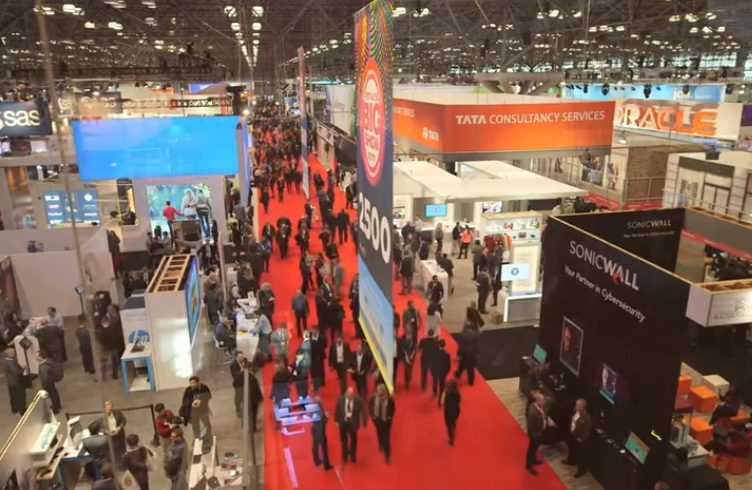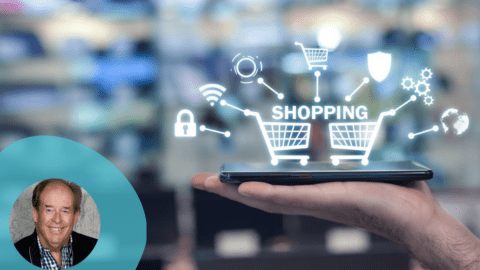This year’s NRF Big Show did not disappoint. The show floor was busy and energetic from Sunday through the end of the show on Tuesday. Sessions were packed and the Innovation Lab area was impressive. As usual, Retail TouchPoints sent a strong contingent of editors to cover sessions, attend briefings and record video interviews with retailers, solution providers and other industry experts. Read on for our six editors’ perspectives on key takeaways from #NRF17.

Advertisement
Focus On The Right Analytics To Drive Future Success
Taking analytics to the next level is the key imperative I believe retailers and solution providers should have in mind as the basis for business strategies moving forward. Whether the focus is on inventory optimization, shopper personalization or last mile delivery, handling the data effectively will drive future success. It’s a priority today to capture data from a steadily increasing number of sources — location, weather, social influencers — and being able to identify the most relevant data points is table stakes. NetSuite, for example, is tapping advanced analytics to hone in on micro-verticals in retail, as specific as Campus Bookstores and the Outdoor segment. Esri — known for its location expertise — is doubling down on Location Data Management to deliver relevant insights from transportation and routing to personalized customer engagement. In a session I attended with Walgreens and Profitect, I learned about how the retailer is using advanced analytics to help with asset protection and identify how specific types of losses are occurring. In one example, Walgreens is tapping an algorithm to identify why stores were increasing inventory even though sales were consistent. This type of analysis has led to “transformational change” at Walgreens during the past few years. — Debbie Hauss, Editor in Chief

Walk A Mile In A Store Associates’ Shoes
All retailers worry about delivering a customer experience (CX) that is seamless and friction-free. It was a pleasant surprise to discover that several NRF vendors also are paying attention to the AX, or Associate Experience, in designing in-store solutions. After all, associates are a retailer’s brand ambassadors, and without easy-to-use technology they will fall further behind consumers. SATO Global Solutions, part of the Acuitas Digital alliance, showcased how the data from an array of sensors, including RFID-tagged store merchandise, can be integrated into a task management system and sent to associates’ mobile devices. Tasks can be generated based on a retailer’s key priorities, so if the sensors note that an item has been moved, and if the retailer’s priority is ensuring misplaced items are returned immediately, the right staff member will get the message. At Fujitsu, wearable associate technology (in this case Samsung smart watches) is intelligently designed for a busy fast-moving consumer goods environment. The devices are literally always with the managers and associates that use them; they can’t be dropped on the floor, minimizing breakage; and they leave associates’ hands free, allowing them to maintain eye contact with shoppers. — Adam Blair, Executive Editor

Personalized Signage, Interactive Robots Could Upgrade The Store Experience
Given the changing role of retail stores as they reel in less traffic and generate lower sales, it was encouraging to see the innovation devoted to creating and optimizing the “new” store for shoppers.
Adam mentioned that many solution providers are now emphasizing their associate-facing technologies, but they’re also working with retailers to improve the customer-facing experience. I had my first NRF meeting with Aptos, which highlighted personalized digital signs and displays designed to interact with shoppers as they enter and browse the store. The signage provides suggestions based on prior purchases, similar to the way recommendation engines operate online.
I also got the chance to visit the Softbank booth to catch a glimpse of the “Pepper” robot, which is designed to play numerous roles in the store: associate, concierge and brand ambassador. The variety of these roles intrigue me largely because the technology is focused on multiple steps of the in-store shopper journey. I believe the jury is still out on whether the robot will be the hit in stores that it was at #NRF17, but it marks great progress for brands looking to provide consumers with more assistance and information on the spot. — Glenn Taylor, Senior Editor

Individualization Is The New Personalization
One of the most important takeaways from my three days at NRF was the increased demand for highly personalized experiences and interactions between consumers and retailers. In fact, during a session led by Kibo and Steinmart, I learned that it’s no longer about “personalization” as much as it is about “individualization.” Retailers can no longer treat customers as a segment; they need to go beyond that and provide personalization that’s singled out to the individual shopper. Naturally, that’s no easy feat.
Some e-Commerce examples include: personalized promotions on the home page; targeted recommendations on product pages; and product recommendation on shopping cart pages. Leveraging data to deliver these recommendations is crucial to hitting the mark. Another cool example of personalization — this time in a brick-and-mortar setting — was demonstrated at the Adobe booth. The company unveiled a new partnership with Memomi, to provide retailers with the ability to deliver customized content to shoppers via interactive mirrors. As people interact with the mirror, it becomes “smarter” and offers more customized experiences. These mirrors also go so far as to “notice” who is walking by them, to display a specific ad to the shopper. — Klaudia Tirico, Features Editor

Create A ‘Tribal Culture’ Of Brand Authenticity
If #NRF17 taught us anything, it is that no matter which technologies a retailer chooses to engage customers, it’s essential to first establish trust and authenticity, by building an authentic, tribal culture for brands.
In a session titled Brand Devotion Index: The Three Characteristics Of The Most Loved Brands, Ryan Watchorn, Chief Marketing and Strategy Officer for Cabela’s, discussed the importance of authenticity, personalization, and the need to make customers feel as though they are part of a tribal experience. Those companies ranked high on the Brand Devotion Index (BDI) found that two-thirds of their shoppers would be completely devastated if their favored brand disappeared. These brand devoted customers were found to spend 50% more than non-devoted shoppers.
In the session, titled The Secret To Turning Stores Into Gathering Places: The Bonfire Effect, Kevin Kelly, Principal and Co-Founder of AIA, explained that it is essential to connect consumers with a sense of shared values, purpose and identity. To tie all of this together, the final keynote address on Jan. 17 was fittingly titled Winning Today’s Socially Aware Consumer. Lars Petersson, President of IKEA U.S, and Christopher Gavigan, Founder, Chief Purpose Officer at The Honest Company, explained that every retailer must create a better everyday life for its customers. — David DeZuzio, Managing Editor

The New Customer Experience Equation: Products, Services And Expertise
The most interesting and significant trend I saw at this year’s NRF is the convergence of products, services and brand expertise.
For years, analysts and thought leaders have said that retailers need to focus on creating immersive experiences that educate and empower consumers. This can’t be achieved with a mobile technology rollout or some flashy digital displays; sometimes, it takes a human touch. That’s why brands like Sephora are empowering employees to make over customers and give makeup classes. Using technology from TimeTrade, Sephora allows consumers to register for a makeover or class, and share more details around their personal preferences, situations and goals. With this insight, the store manager can see which customers are coming in, what they’re hoping to achieve and, moreover, match the right associate with the customer so she has a great experience.
Products, services and expertise can also converge online. During a conversation with Mirakl Co-Founder Adrien Nussenbaum, I learned about how retailers can partner with third-party sellers and service providers to create a branded marketplace experience. It’s powered by their brand and their e-Commerce site is the “hub” of the experience, but they’re integrating supplementary products and services that make consumers’ lives exponentially easier — and the retail experience more enjoyable. — Alicia Esposito, Content Strategist









